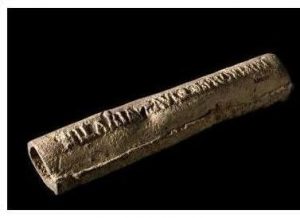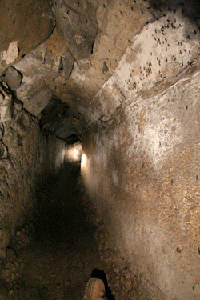The Roman Aqueducts were symbols of great power and innovation at the height of the Roman Empire. Constant access to fresh, potable water for such a large number of people had never been seen at this scale and was the result of highly complex and methodical planning and construction that has fascinated archaeologists and historians.
The discovery of these aqueducts provides archaeologists with far more details on the amount of water Romas required for their day to day activities, including drinking and cooking but also large lavish baths and fountains enjoyed by the wealthier members of society. By analysing the differences in Aqueducts built a different time periods we can see how building methods evolved, such as the difference between the Aqua Traiana and Acqua Paola aqueducts. These two ducts were built centuries apart with the Traiana being created in 109 C.E. and the Paola beginning construction in the early 1600s; but they intersected in many areas due to their common water source. (Cartwright 2012, Taylor 2012) Researchers have found that diagonal brickwork and opus signinum cement, typical components of 2nd century Roman building, are present in certain areas of the Acqua Paola, providing evidence that the ancient Aqua Traiana system served as the base for the newer aqueduct of the 16th century. (Taylor 2012)
The Aqueducts were sources of enormous pride for Romans, in fact they were often used to compare Rome to other famous societies, as civil engineer Frontinus once said in a treatise, “With such an array of indispensable structures carrying so much water, compare, if you will, the idle Pyramids or the useless, though famous, works of the Greeks!” (Rodà 2016) The elaborate decorations and grandiose architecture of the external sections of many of these aqueducts indicates that while they were important sources of water for the city, they also stood as public testaments to Roman ingenuity.
Roman aqueducts transformed Roman culture in a plethora of ways, but one of the most important was how waste was dealt with. Before aqueducts all waste was primarily dumped in the street, but as water systems became more and more intricate, public latrines became commonplace, where waste was pumped into massive sewers with water from the aqueducts. (Gill 2018) Although water was available to everyone in Rome, it was generally only the wealthiest who had running water in their homes, generally coming from a lead pipe connected to an aqueduct. Archaeologists have found that many of these pipes have specific inscriptions or designs on them to prove that they were legally installed- indicating the widespread presence of illegal Aqueduct tapping. (Rodà 2016)

Image 3: A water pipe with an inscription on it indicating the legality of its manufacture and installment.
Water is known as a necessity for human life, but it is often forgotten how influential water is in so many facets of so many different cultures. Much of Roman society was built around their aqueduct system, and it carried as much symbolic meaning as it did functional purpose. Much can be revealed about a society’s culture and structure by studying how it gets its water.
Related:
This website provides a short history of water and health systems in Ancient Societies– http://www.romanaqueducts.info/aquasite/romavirgo/
This video shows the processes of finding and documenting the remains of the Aqua Traiana Aqueduct- https://www.youtube.com/watch?v=82__BJQ6h-Q
This writing is a translation of Sextus Julius Frontinus’s, a water commissioner in the first century A.D., account of Rome’s water system- http://www.uvm.edu/~rrodgers/Frontinus.html
References:
Cartwright, Mark. “Aqueduct.” Ancient History Encyclopedia, Ancient History Encyclopedia, 9 Nov. 2019, www.ancient.eu/aqueduct/.
Gill, N.S. “Ancient Rome’s Futuristic Water Systems.” ThoughtCo, ThoughtCo, 1 Sept. 2018, www.thoughtco.com/aqueducts-water-supply-sewers-ancient-rome-117076.
Richter/GTRES, Juergen, et al. “Aqueducts: Quenching Rome’s Thirst.” National Geographic, 15 Nov. 2016, www.nationalgeographic.com/history/magazine/2016/11-12/roman-aqueducts-engineering-innovation/#close.
Taylor, Rabun. “Rome’s Lost Aqueduct.” Rome’s Lost Aqueduct – Archaeology Magazine Archive, Apr. 2012, archive.archaeology.org/1203/features/rome_aqua_traiana_aqueduct_carestia.html.
Images:
Image 1: https://archive.archaeology.org/1203/features/rome_aqua_traiana_aqueduct_carestia.html
Image 2: https://hubpages.com/education/roman-sewer-and-aqueducts
Image 3: https://www.romae-vitam.com/ancient-roman-aqueducts.html






